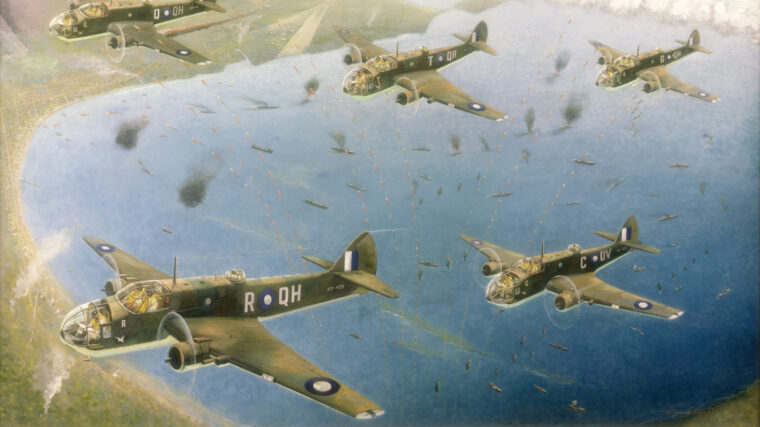
Japanese
Kiwis Over the Pacific: The RNZAF in World War II
By Allyn VannoyDuring early World War II operations in the Pacific, Geoff Fisken would become one of the most outstanding pilots of the RNZAF—the Royal New Zealand Air Force. Read more

Japanese
During early World War II operations in the Pacific, Geoff Fisken would become one of the most outstanding pilots of the RNZAF—the Royal New Zealand Air Force. Read more
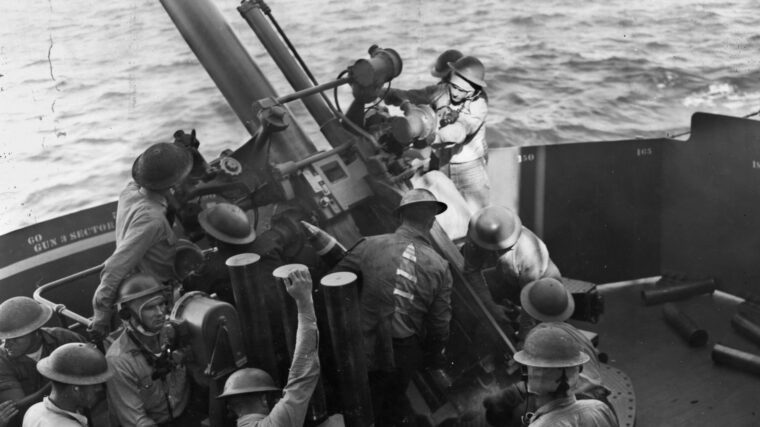
Japanese
The fading daylight of August 6, 1942, found the American heavy cruisers Astoria and Chicago as part of Task Force 61, under the command of Vice Admiral Jack Fletcher, steaming toward the South Pacific island of Guadalcanal. Read more
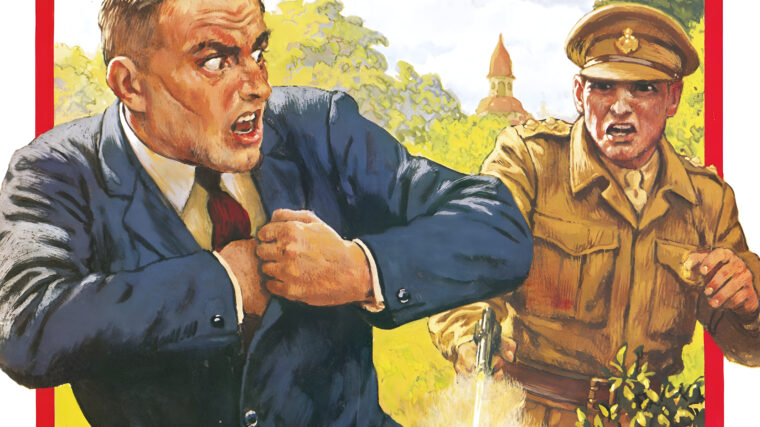
Japanese
Mildred “Midge” Gillars was born in Portland, Maine, took drama lessons in New York City, appeared in vaudeville, worked as an artist’s model in Paris and a dressmaker’s assistant in Algiers, and taught English at the Berlitz School in Berlin before—motivated by love and fear—she became the notorious “Axis Sally,” one of the Nazis’ leading radio propagandists. Read more
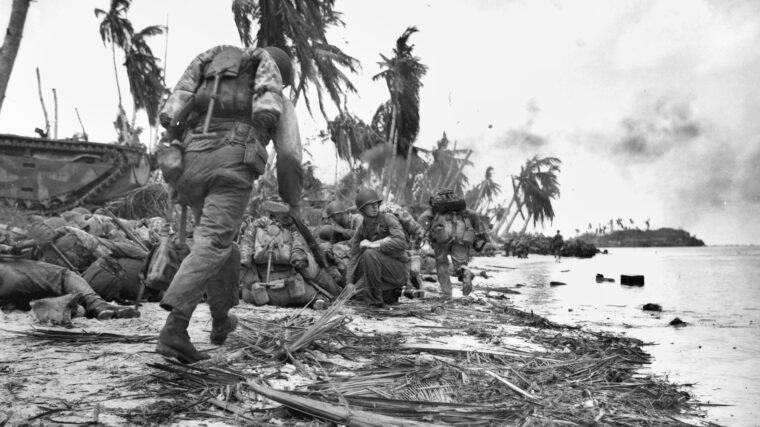
Japanese
Above all, the island was defendable. From Ritidian Point in the north to the extreme southern coastline, Guam is 34 miles long, made in an irregular shape covering 228 square miles, the largest of all Pacific islands between Japan and New Guinea. Read more
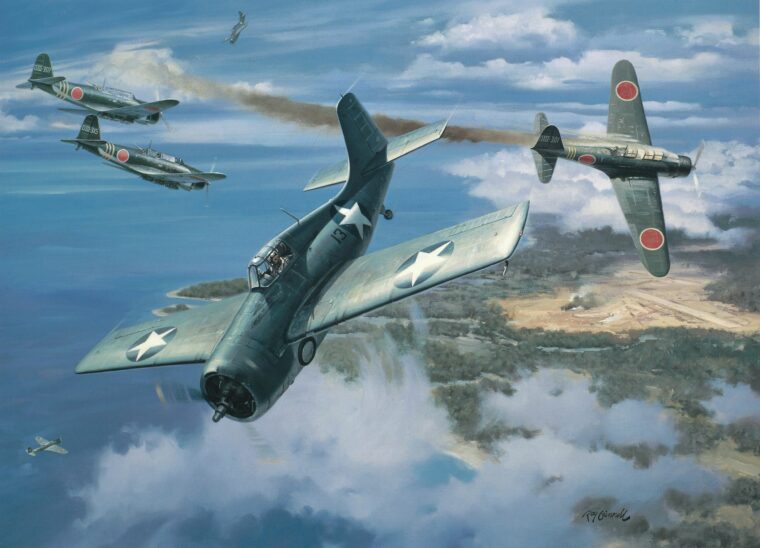
Japanese
Prologue: At the start of World War II, Midway Atoll was a key U.S. base in the central Pacific. Read more
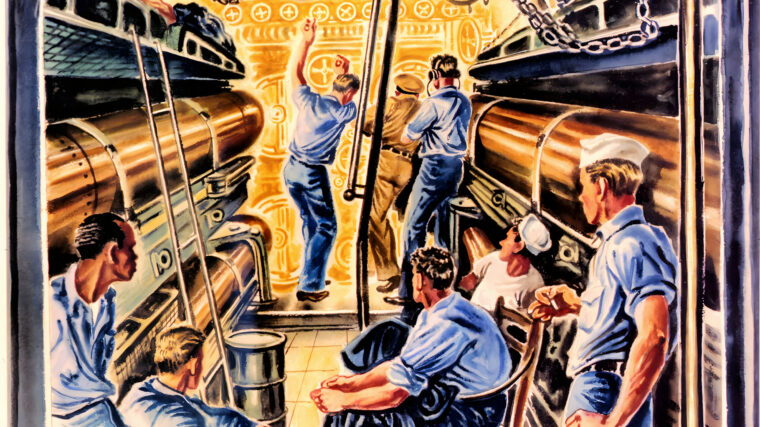
Japanese
BACKSTORY: In World War II, the American submarine force was inordinately small—just 252 total boats, compared to the more than 1,100 deployed by Germany and over 600 built by Japan. Read more
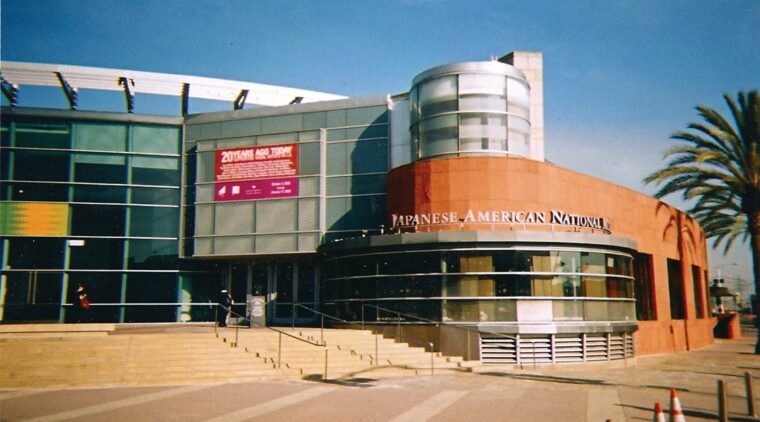
Japanese
Shortly after the Japanese attack on Pearl Harbor on December 7, 1941, many Japanese Americans, especially those living on the West Coast, were suspected of being possible spies, saboteurs, and disloyal Americans. Read more
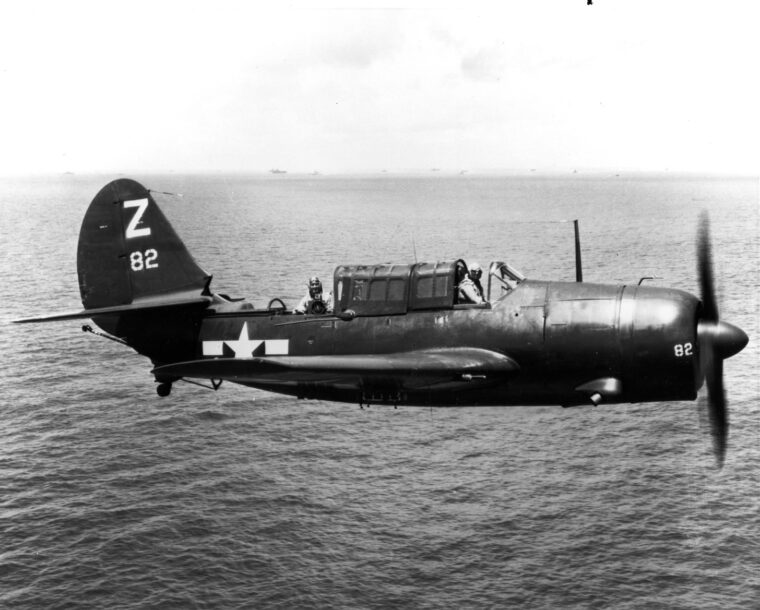
Japanese
It sent Japanese warships to the bottom of the ocean. It pulverized fortifications on Japan’s home islands. Read more
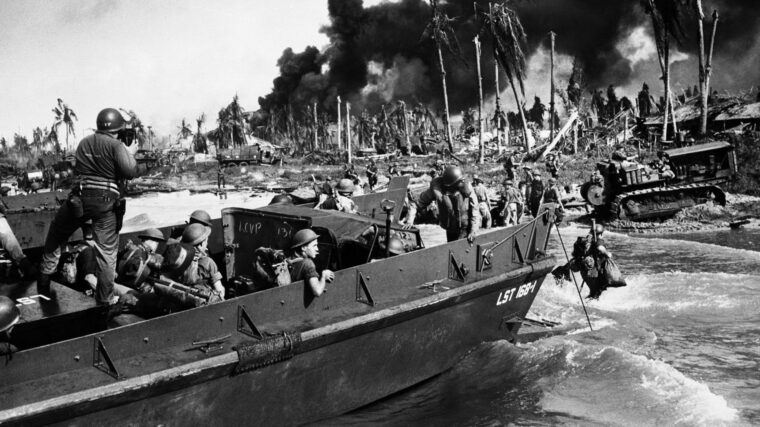
Japanese
World War II in the Pacific was fought in thousands of remote locations. The island of Borneo was the site of one of the least known clandestine operations of the conflict, led by an adventurous, but arrogant, anthropologist. Read more
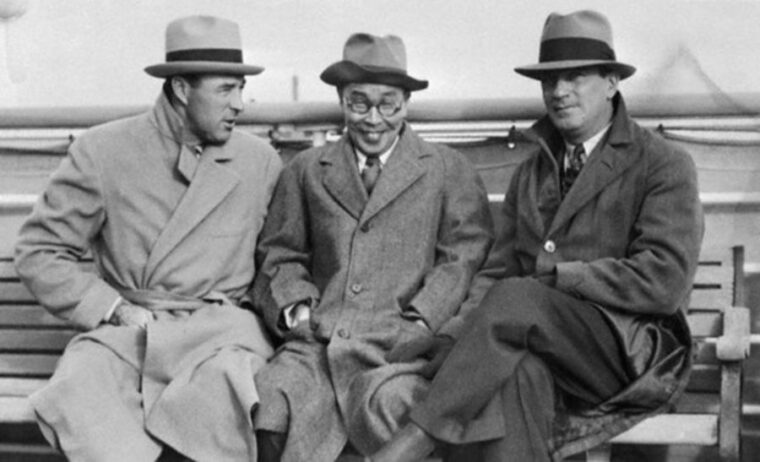
Japanese
In 1920, a young, handsome Jewish boy from New Jersey took the train from Grand Central Station to Princeton, New Jersey, where he would enroll that fall. Read more

Japanese
Japan’s road to World War II was a long one. Throughout the late 19th century, the island nation broke out of its feudal past on a path to modernity with a ruthlessness and singlemindedness that would have scared Western nations had they been paying attention. Read more
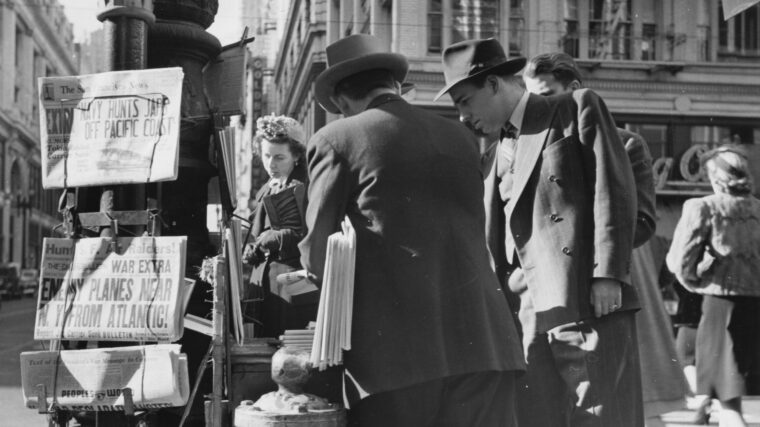
Japanese
It seemed like just another ordinary day at sea. Early on December 7, 1941, a U.S. Army-chartered cargo vessel, the 250-foot SS Cynthia Olson, under the command of a civilian skipper, Berthel Carlsen, was plying the Pacific waters about 1,200 miles northeast of Diamond Head, Oahu, Hawaii, and over 1,000 miles west of the Tacoma, Washington, port from which she had sailed on December 1. Read more
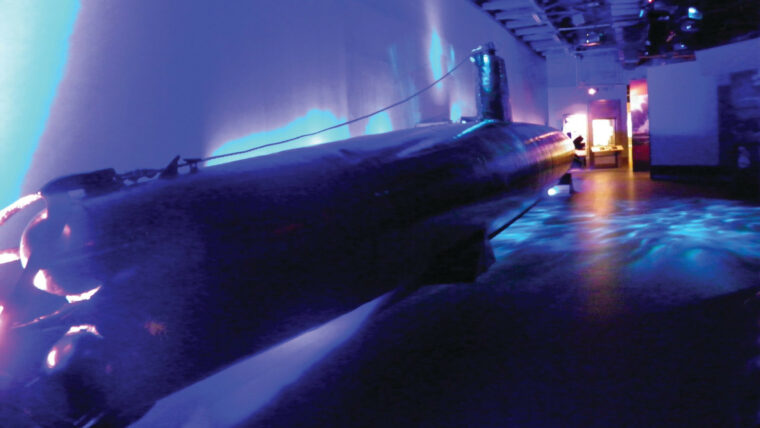
Japanese
The small (population 12,000), central-Texas town of Fredericksburg, about an hour’s drive west of Austin and a little more than that northwest of San Antonio, may seem an odd location for the National Museum of the Pacific War until one realizes that Fredericksburg is the hometown of Fleet Admiral Chester Nimitz––the Eisenhower of the Pacific Theater. Read more
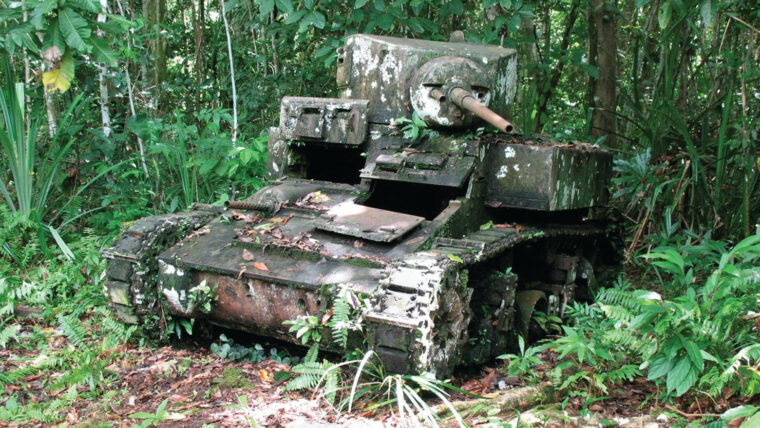
Japanese
The downwind approach of my Boeing 737 into Honiara International Airport goes over Iron Bottom Sound, with Savo Island off in the distance. Read more
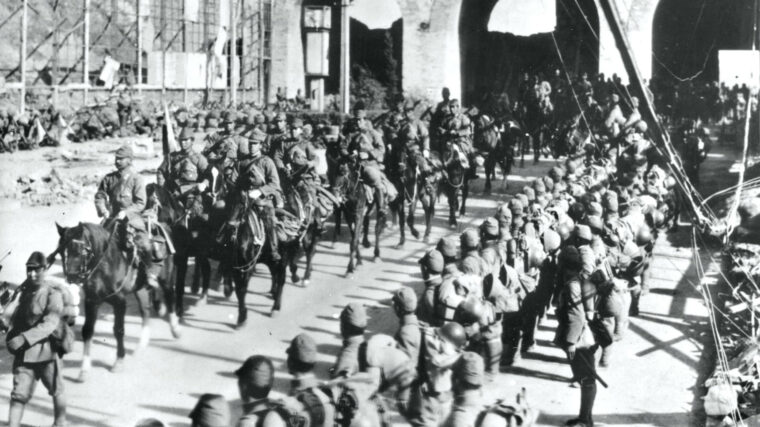
Japanese
On August 15, 1937, the Japanese Imperial Army bombed Nanking, the capital of China. These raids were unrelenting until December 13, when Japanese troops entered the conquered city. Read more
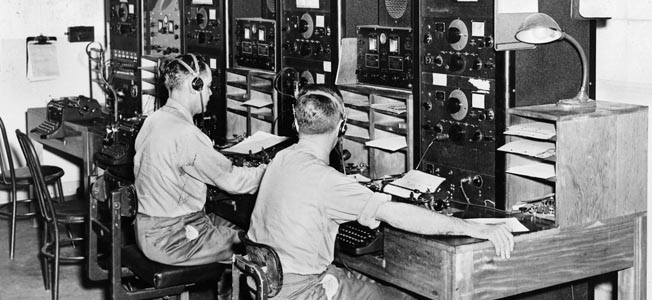
Japanese
The Japanese strike on Pearl Harbor on December 7, 1941—a “Day of Infamy,” as President Franklin D. Roosevelt described it—left the American Pacific Fleet in almost total ruin, plunged the United States into World War II, and set off a controversy regarding the events that led up to the attack that is still being hotly debated. Read more
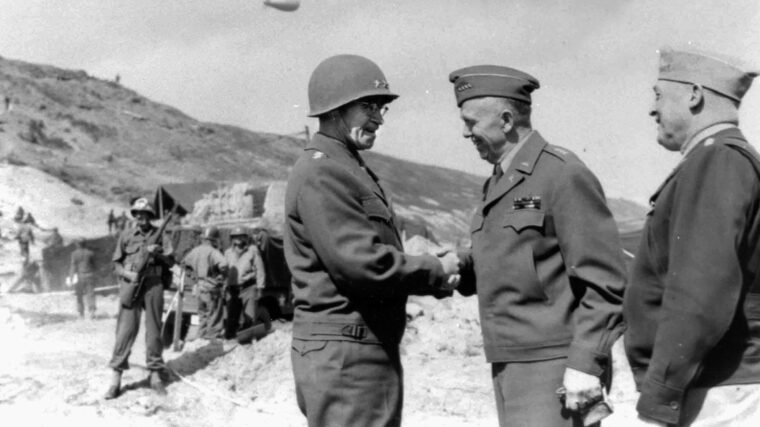
Japanese
George Catlett Marshall was the greatest American military man of his age. If the United States Army had kicked off the 20th century with the specific intent of constructing a chief of staff to lead it to victory in World War II, it could not have done a better job than what chance provided in the triumphs and travails over the 40 years that molded George Marshall. Read more
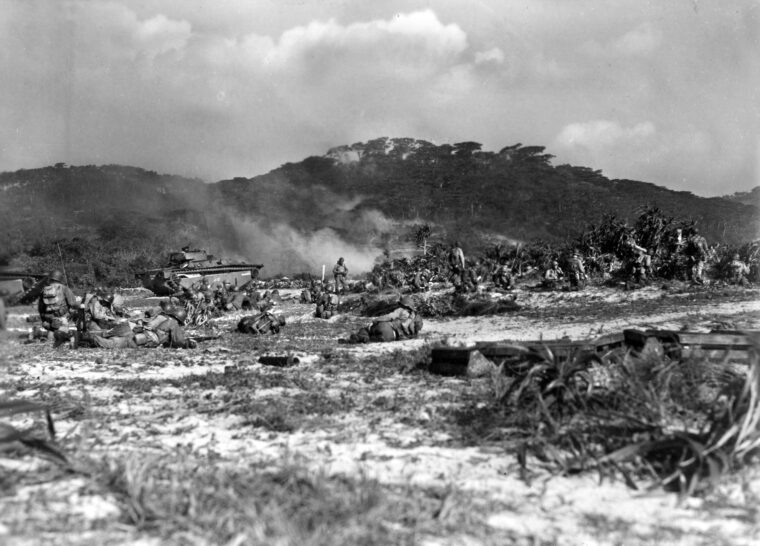
Japanese
Close to the northern end of the island of Tokashiki, the largest member of a tiny group of islands called Kerama Retto, located 15 miles west of Okinawa and hardly 400 miles from the Japanese home islands, Corporal Alexander Roberts and the rest of the 306th Regimental Combat Team rested for the night beneath the starry skies of the northern Pacific. Read more
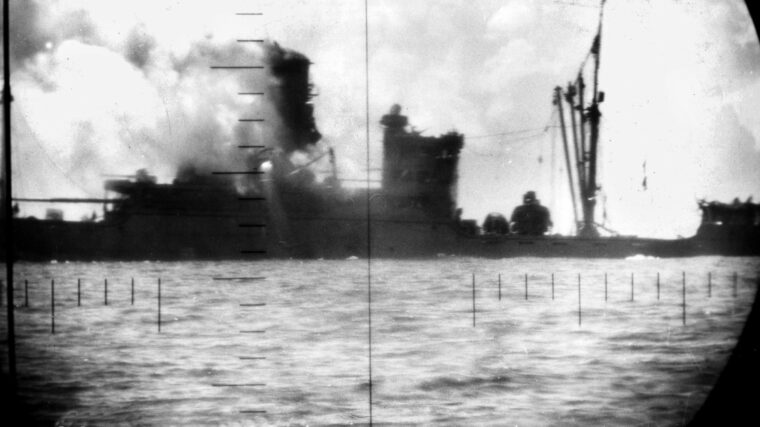
Japanese
The early months of 1942 were dark days for the United States Asiatic Fleet. Much smaller than the Pacific Fleet, and equipped with mostly outdated surface ships, the fleet was in no way capable of winning a serious confrontation with the Imperial Japanese Navy. Read more
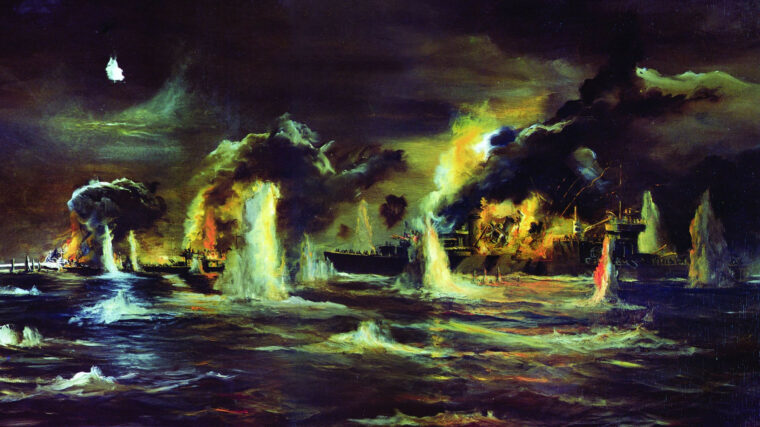
Japanese
A United States naval task force bearing the U.S. 1st Marine Division arrived off Guadalcanal, in the eastern Solomon Islands, on the morning of August 7, 1942, and launched the first American offensive operation of World War II. Read more